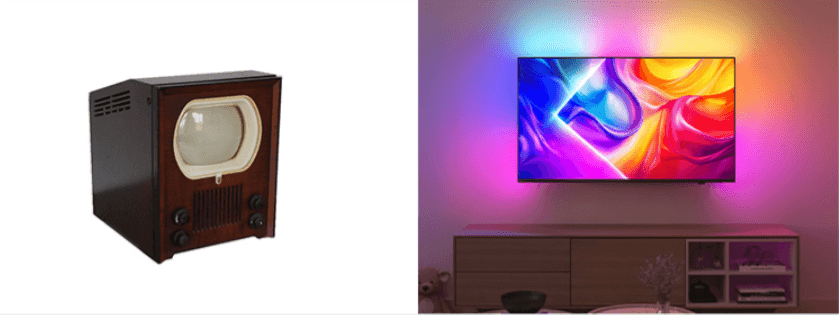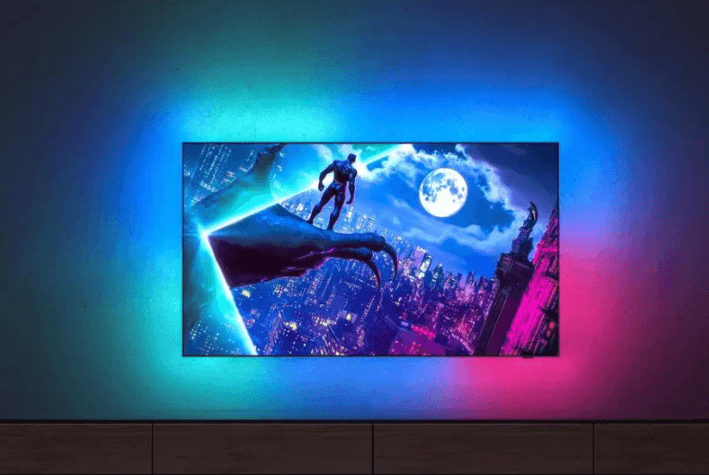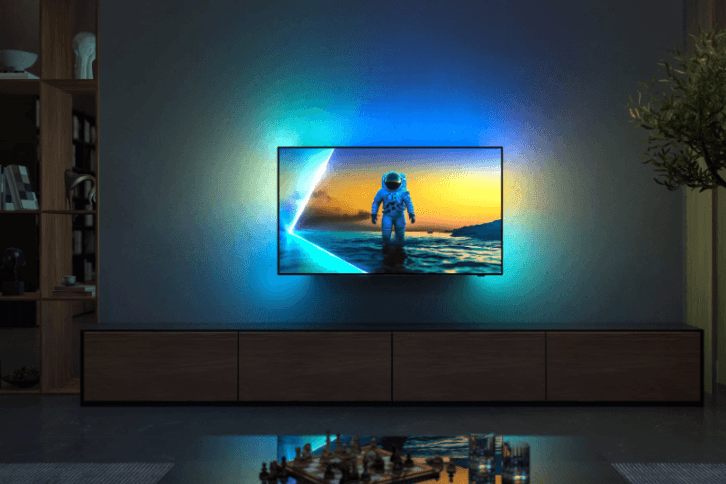
Philips is giving its rivals food for thought after announcing some very tempting prices for its 2025 OLED television range.
The new Philips OLED910, which integrates a sound system from the legendary British audio brand Bowers & Wilkins, has been given a price tag that seriously undercuts competing models from the likes of LG Electronics, Samsung Electronics and Sony. It was first unveiled in January.
It’s priced at £2,199 for the 65-inch version and £3,339 for the 77-inch model – quite a bit cheaper than LG’s equivalent model, the G5 OLED TV, which costs £3,299 and £4,999 respectively, for the 65-inch and 77-inch versions.
Similarly, the 65-inch versions of the Sony Bravia 8 II and the Samsung S95F cost £2,999 and £3,399, respectively, which means that if you buy Philips, you’ll be able to save up to a grand when you get your hands on a premium TV featuring LG’s most advanced Primary RGB Tandem OLED panel, which hits an impressive 3,700 nits peak brightness.
The announcement was timed to coincide with the 75th anniversary of the day that Philips launched its first-ever consumer TV, known as The Kennel, which introduced the 625-line standard that would soon be widely adopted by the then-nascent television industry. Housed in its boxy wooden cabinet, The Kennel marks an interesting contrast with today's newest Philips OLED models, that's for sure.

The Philips OLED910 is a very capable TV, not just due to its panel. It comes with an 81-watt 3.1-channel sound system courtesy of B&W, features the company’s latest 9th Gen P5 AI processor and also sports its iconic four-sided Ambilight mood lighting tech.
In other words, it’s likely going to be one hell of a TV, and though HDTVTest hasn’t been able to review it yet, our colleagues at https://www.choose.tv/us/tv/reviews have tested the display in their database.
The only real downside is that Philips said the OLED910 won’t go on sale at retailers including Amazon, Currys, Richer Sounds and AO until September. So, while you will save money, you’ll need to be a bit more patient – on the other hand, LG’s, Samsung’s and Sony’s latest OLED TVs can all be had right now.

Interestingly, while the Philips OLED910 competes with the G5 and S95F, it’s not the company’s most premium model. Instead, that honor goes to the Philips OLED950, which will launch in October priced at £2,799 and £3,339 respectively, for the 65-inch and 77-inch models. More expensive, but still very competitive when compared to Philips’ rivals.
The main difference between the OLED950 and the OLED910 is that the more premium model comes with a more powerful “Dual Engine 9th Gen P5 AI processor”, but we’re yet to see what kind of difference that makes in terms of picture quality. Strangely, the OLED950 also comes with a somewhat lower-specced sound system. There’s no B&W expertise here – instead you’ll get a 70-watt 2.1-channel sound system with a rear-mounted subwoofer.
That said, anyone who intends to hook up their TV to a powerful soundbar or external surround sound speakers won’t be bothered in the slightest.
HDTVTest's Vincent Teoh did get an early look at the Philips OLED910 and OLED950 models in January, and you can learn more in this video:
Elsewhere, Philips announced two lower-cost OLED models that make some sacrifices in terms of the actual panel. The Philips OLED810 is priced at £2,199 for the 77-inch model and it will go on sale at the end of this month. It comes with an older OLED EX panel (last year’s tech) which still offers decent brightness of 1,500 nits, and features the same new processor as that found on the OLED910 and OLED950, as well as a 70-watt 2.1-channel sound system and three-sided Ambilight experience.
The company said in January that it will also launch 42-, 48-, 55- and 65-inch size options for the OLED810, but there’s no word on the availability or price of these smaller models.

Last but not least, there’s Philips’ entry-level OLED 760 model, which features a 1,000 nits OLED Ex panel, the older 7th Gen P5 AI processor and runs Titan OS rather than the Google TV platform found on the more expensive models.
Philips said the 55-inch version will cost £1,199, with the 65- and 77-inch variants priced at £1,499 and £1,999. They should hit the shops at the end of this month. For anyone looking to upgrade from bog-standard LCD to OLED, it sounds like a very compelling option.
Of course, Philips isn’t only about OLED. It also has some interesting Mini-LED and QLED TVs launching this year. The highest-end non-OLED model is the MLED950, which is a direct competitor to the likes of Samsung’s Neo QLED TVs and the new Mini-LED models from TCL and Hisense.
The Philips MLED950 sports a blazing-fast 144Hz 4K panel and comes with four HDMI 2.1 ports, which should make it a compelling option for gamers. It runs Titan OS and has a 60-watt 4.1-channel sound system with three-sided Ambilight. It appears there’s only a single size option though – 65-inches, priced at £1,199.
Last but not least is the Philips PUS8500, which is a basic entry-level 4K QLED TV that runs the Titan OS platform and comes with “Pixel Precise Ultra HD picture processing” and the standard three-sided Ambilight system. There’s a wide range of size options to choose from, ranging from 43-inches to 85-inches. Prices start at £369 for the smallest model, and max out at £1,349 for the biggest.